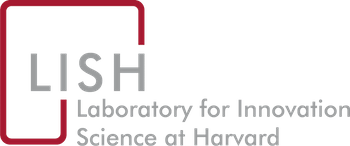. 3/19/2020. “
”.
At the heart of any innovation process lies a fundamental practice: the way people create ideas and solve problems. This “decision making” side of innovation is what scholars and practitioners refer to as “design”. Decisions in innovation processes have so far been taken by humans. What happens when they can be substituted by machines? Artificial Intelligence (AI) brings data and algorithms to the core of innovation processes. What are the implications of this diffusion of AI for our understanding of design and innovation? Is AI just another digital technology that, akin to many others, will not significantly question what we know about design? Or will it create transformations in design that current theoretical frameworks cannot capture?
This article proposes a framework for understanding design and innovation in the age of AI. We discuss the implications for design and innovation theory. Specifically, we observe that, as creative problem solving is significantly conducted by algorithms, human design increasingly becomes an activity of sense making, i.e. understanding which problems should or could be addressed. This shift in focus calls for new theories and brings design closer to leadership, which is, inherently, an activity of sense making.
Our insights are derived from and illustrated with two cases at the frontier of AI ‐‐ Netflix and AirBnB (complemented with analyses in Microsoft and Tesla) ‐‐, which point to two directions for the evolution of design and innovation in firms. First, AI enables an organization to overcome many past limitations of human‐intensive design processes, by improving the scalability of the process, broadening its scope across traditional boundaries, and enhancing its ability to learn and adapt on the fly. Second, and maybe more surprising, while removing these limitations, AI also appears to deeply enact several popular design principles. AI thus reinforces the principles of Design Thinking, namely: being people‐centered, abductive, and iterative. In fact, AI enables the creation of solutions that are more highly user‐centered than human‐based approaches (i.e., to an extreme level of granularity, designed for every single person); that are potentially more creative; and that are continuously updated through learning iterations across the entire product life cycle.
In sum, while AI does not undermine the basic principles of design, it profoundly changes the practice of design. Problem solving tasks, traditionally carried out by designers, are now automated into learning loops that operate without limitations of volume and speed. The algorithms embedded in these loops think in a radically different way than a designer who handles complex problems holistically with a systemic perspective. Algorithms instead handle complexity through very simple tasks, which are iterated continuously. This article discusses the implications of these insights for design and innovation management scholars and practitioners.
![]()
![]()
![]()
![]()
